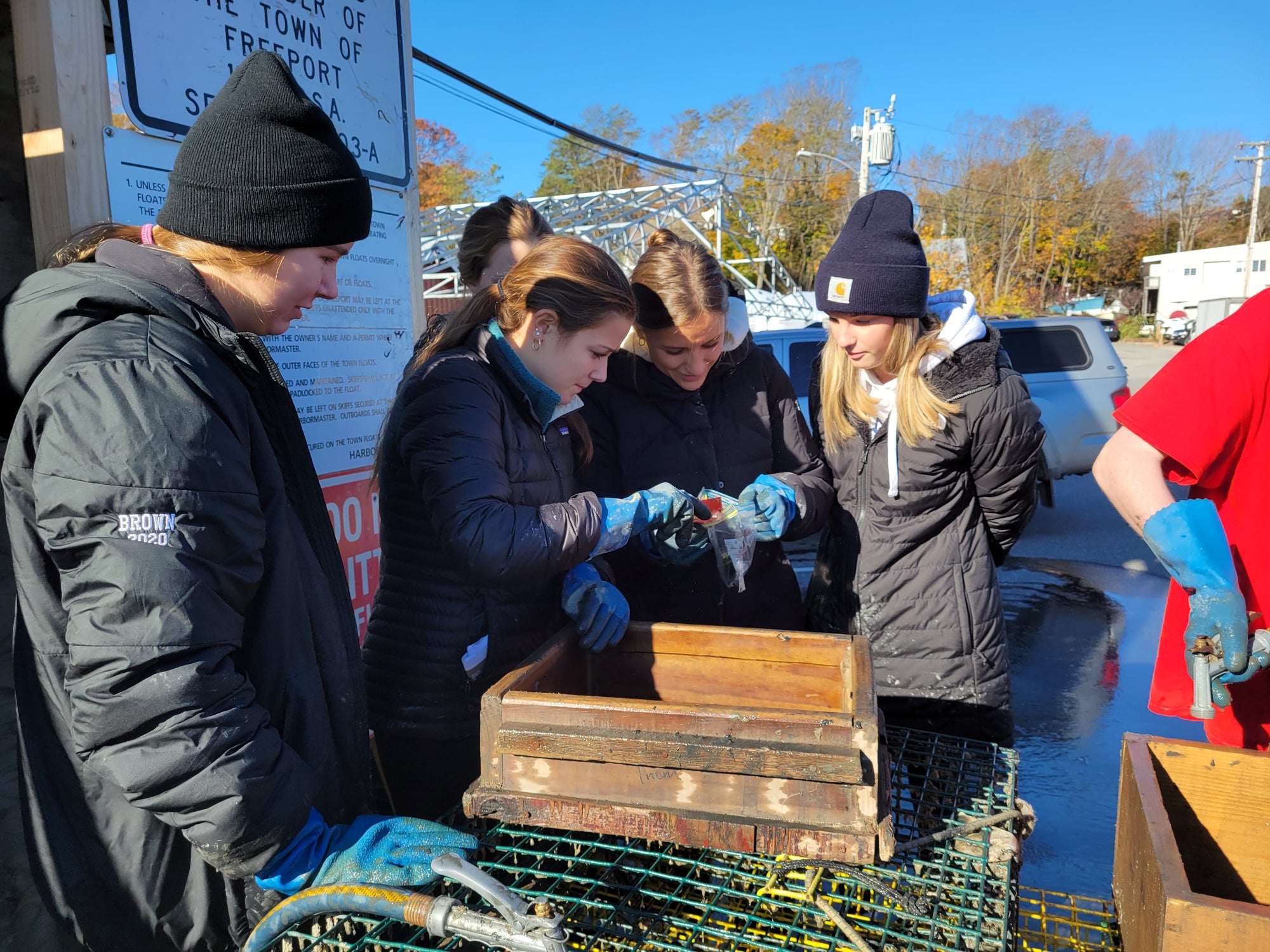
Soft-Shell Clam Recruitment with Downeast Institute
As part of our philanthropic initiative, the Keeper Fund, it is important to us to work with various organizations that are critical in building resilience in coastal communities and who understand the importance of a healthy ocean environment to ensure that these communities thrive. In 2021, we partnered with Downeast Institute (DEI) to assist in their mission to examine soft-shell clam recruitment, growth and survival. Building on research they had started in 2020, their ultimate goal is to obtain information necessary to rebuild the iconic Maine fishery, which has suffered a 75% loss of landings since 1980 and 3,000 clammers.
When it started
The work to determine coast-wide soft-shell clam recruitment levels began in 2020, with DEI setting up the Soft-Shell Clam Recruitment Monitoring Network. DEI worked with nine partner communities spanning the coast of Maine in order to measure soft-shell clam recruitment and survival at two mud flats in each of nine towns from Wells to Sipayik in eastern Maine.
The aim of the project is to increase visibility and public awareness of a fishery that is threatened by a dramatically changing marine environment and create an extensive data set for shellfish managers to better understand factors that affect the fishery.
Sara Randall, Associate Director of Downeast Institute, along with Dr. Brian Beal, Director of Research, developed recruitment boxes or “Beal Boxes” that act as a passive trap for settling shellfish. Once the baby shellfish settle into the boxes they are essentially protected from predators. The boxes have small mesh on top and on the bottom to protect from predators on all sides, providing a window into what’s happening in the intertidal at a scale that, without these boxes, people would be unable to witness.
“The boxes in the network capture the recruits so we can understand what is happening in the critical first year of life of clams,” Randall said. “We know from previous research that over 99% of clam recruits are eaten before they turn one-year old. This is important because recruits aren’t able to reach harvestable size in that first year of life.”
What is Soft-Shell Clam Recruitment?
Hannah Greene is an Island Institute Island Fellow who has been living and working at Downeast Institute for two years, and has been assisting Randall and Dr. Beal with the project. At each site, she says, boxes are placed in the lower mid-intertidal before spawning season begins in early spring. Boxes are removed from the intertidal in the fall, which is the end of the clam growing season. All contents of the boxes, along with samples from the non-predator-protected mudflats near the boxes, are processed through a 1-mm mesh sieve and all the commercial shellfish species, along with predators such as green crabs and milky ribbon worms are quantified.
The point, Greene says, is to be able to identify trends in soft-shell clams survival and recruitment, how much they grow, and how many of those recruits survive their first year of life. By collecting data year after year, trends begin to emerge. Throughout the entire process, Greene, along with Randall, Dr. Beal, work with shellfish committees and clammers to conduct the work. Their aim is to make the findings digestible to the people most affected.
2020 Findings
Across the coast, clam recruitment densities were lower than expected. Eight of the eighteen sites had average clam densities of less than 10 clams per sq. ft. Only three sites recorded average clam recruit densities of over 100 clams per sq. ft. (Winnock Neck in Scarborough, Dobbins Island in Beals, and Gleason Cove in Sipayik). At Gleason Cove, they found a single recruitment box with 4,331 recruits, the second highest number of clams ever recorded in a single box. Gleason Cove received more than 1,000 recruits per sq. ft. Read a summary of the 2020 findings here.
By comparing the number from the predator protected boxes to the number found in the unprotected mud, they were able to learn how many shellfish survived their first year of life and have a much greater chance to make it to harvestable size. Beal and Randall noted that other commercial shellfish species were found in the boxes, especially razor clams, mussels, and Atalntic surf clams, along with green crabs. This led to a 2021 partnership with Luke’s Lobster, where we funded research into quantifying the other commercially important shellfish recruits.
The winter of 2020-2021 was a warm winter, and with increased water temperatures, green crab is able to proliferate, an indicator of what will happen on mud flats the following year.
Additional shellfish research in 2021
In 2021 three additional sites were added in Washington county, bringing the total number of monitoring sites to 21. This extensive research on soft-shell clams can be transferred to other shellfish. Throughout the process in 2020, other species were discovered in boxes, including quahogs, razor clams, Atlantic Surf clams, and mussels. With the aid of the Keeper Fund, the Downeast Institute was able to continue their research and count additional shellfish recruits. The final results can be found here. In general, clam recruitment numbers were down and green crab densities were up, most likely due to the warm winter of 2020-2021. The highest density of clam recruits was only 115 recruits per sq. ft and occurred in Ryder Cove in Islesboro.
In terms of other commercial species, mussel recruits were found in highest numbers (1,660) at the nine downeast sites, with each of the sites receiving mussel recruits. Lamoine received the most recruits, receiving 65% of the 21 sites' mussel recruitment. Over 800 razor clam recruits were found at the 21 sites, with the most (63%) occuring in the midcoast region. The two Islesboro sites in midcoast is where we found the vast majority of the 207 Atlantic surf clam recruits (94%).
Greene noted that the information they’ve been finding through research is incredibly important and relevant to anyone who is interested in the working waterfront, whether a clammer or shellfish warden or the town government — the findings are insightful, interesting, and impactful to coastal communities, or anyone who is interested in learning more about it.
“When we think about commercial harvesting, understanding this life stage is critically important because we know how many soft-shell clams we lost,” Randall said. “It’s the second most valuable fishery in Maine, and employs the second most amount of fishermen after lobster. It’s an iconic species, and Maine is a top producer of soft-shell clams in the country.”





